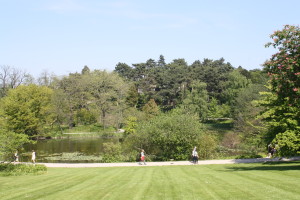Last week I came across a reference to the sheer number of acres currently used by our lawns and was pretty impressed at the full extent of the area we water, trim, and curate (around 128,000 square kilometers, which means it uses several times the space used by farmers to grow corn, according to Cristina Milesi and a group at the University of Montana). So we’ve become very, very efficient at managing spaces used more for recreation than for food, and I imagine that has a pretty big impact on the ecosystems our yards adjoin and replace.
In my work right now, I’m studying the diets of carnivores in different coastal sites of Louisiana- although I’m still working my way through field samples, so far they have used a wide variety of food sources. My impression is they are responding to different levels of food availability throughout the year as seasons change, as well as ways in which we have removed or added resources (still not sure what was so appealing about the Styrofoam and plastic film, but I imagine they smelled like food or were covered with something edible). If our lawns make up such a large part of the environment in some locations, that must have an impact on food availability for wildlife in general- my guess is there are negatives and positives to the presence of maintained yards, for example reducing the number of plant species seeding and fruiting, but also reducing the cover available for prey. And there are probably ways that we can make our yards more wildlife-friendly.
So this month I will be looking into the reality of living in a sea of lawns- are we creating patchworks of single species agriculture? How do our well-cared for yards impact wildlife of all shapes and sizes? And can we get the backyards we want for recreation and aesthetics will still providing important habitat to species that need it?

